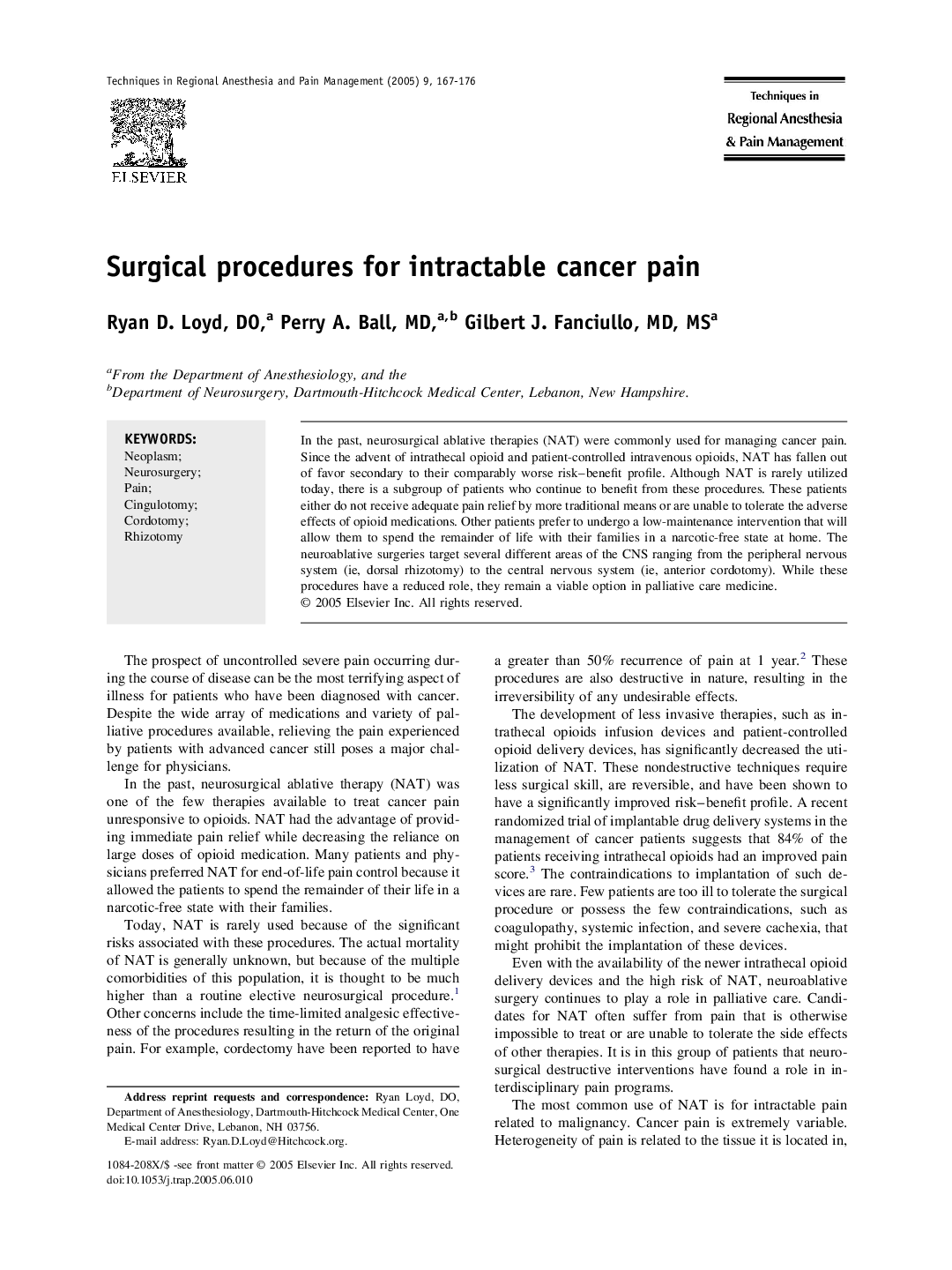| Article ID | Journal | Published Year | Pages | File Type |
|---|---|---|---|---|
| 9101977 | Techniques in Regional Anesthesia and Pain Management | 2005 | 10 Pages |
Abstract
In the past, neurosurgical ablative therapies (NAT) were commonly used for managing cancer pain. Since the advent of intrathecal opioid and patient-controlled intravenous opioids, NAT has fallen out of favor secondary to their comparably worse risk-benefit profile. Although NAT is rarely utilized today, there is a subgroup of patients who continue to benefit from these procedures. These patients either do not receive adequate pain relief by more traditional means or are unable to tolerate the adverse effects of opioid medications. Other patients prefer to undergo a low-maintenance intervention that will allow them to spend the remainder of life with their families in a narcotic-free state at home. The neuroablative surgeries target several different areas of the CNS ranging from the peripheral nervous system (ie, dorsal rhizotomy) to the central nervous system (ie, anterior cordotomy). While these procedures have a reduced role, they remain a viable option in palliative care medicine.
Related Topics
Health Sciences
Medicine and Dentistry
Anesthesiology and Pain Medicine
Authors
Ryan D. DO, Perry A. MD, Gilbert J. MD, MS,
